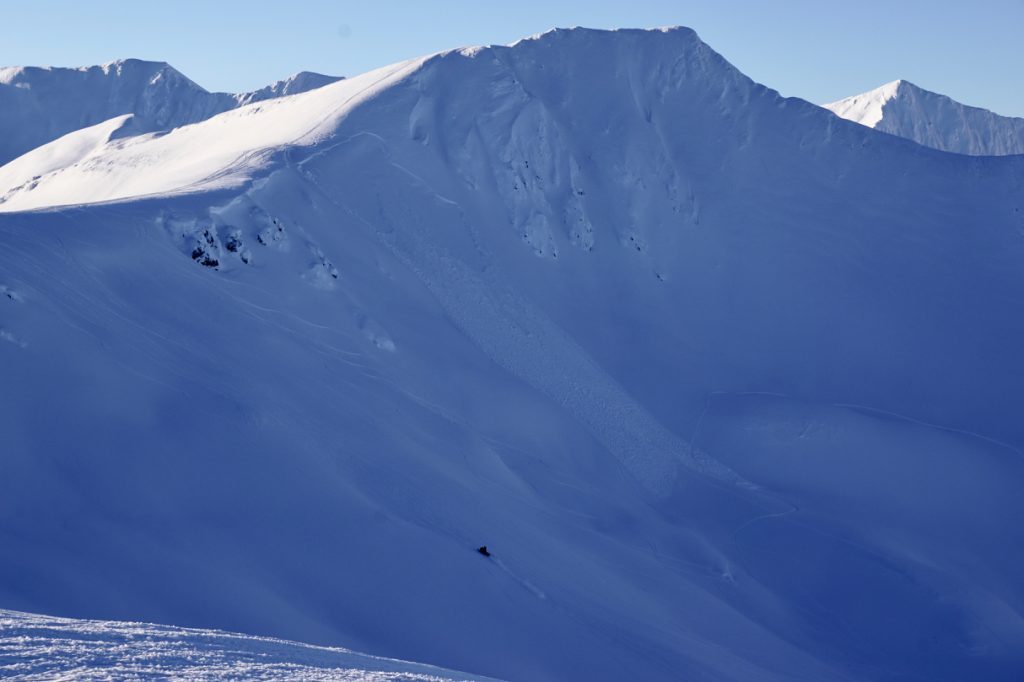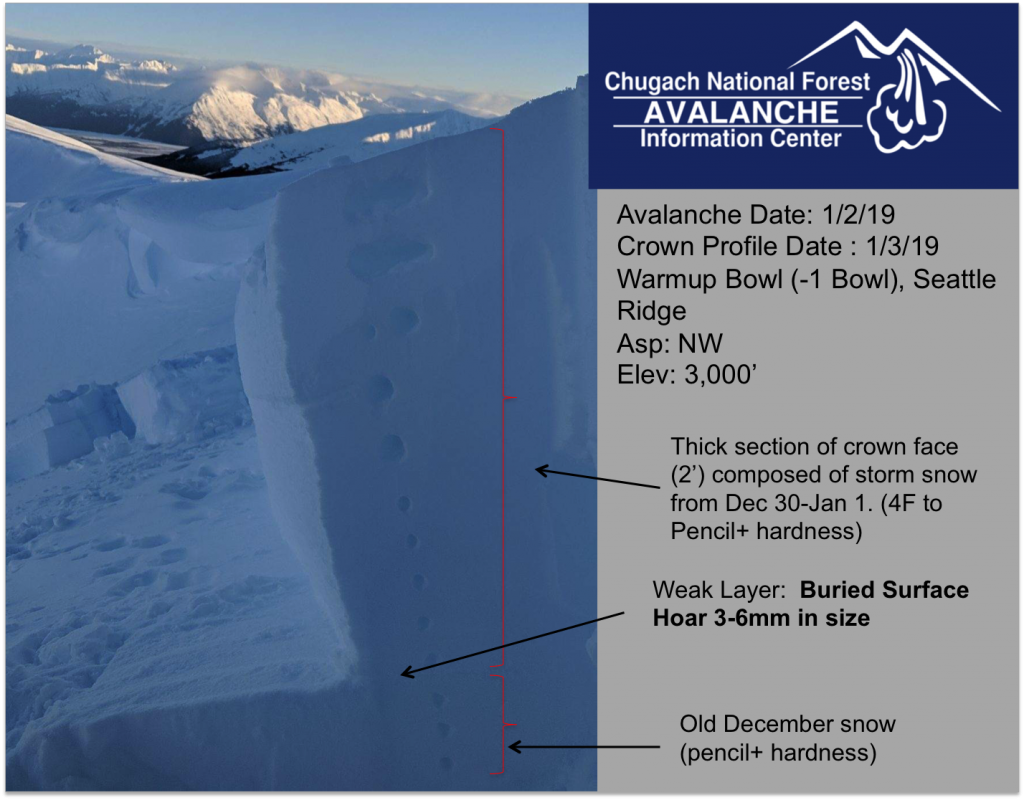Yesterday we received a report of a remotely triggered large slab avalanche in Warm-Up Bowl of Seattle Creek. This avalanche was triggered by a snowmachine from Seattle ridge without incident the day before (Wednesday.) The weak layer in question was confirmed to be buried surface hoar. We have been tracking this layer since it formed on Christmas Eve and have found its size and distribution to vary across the region with no consistent pattern. This is a tricky problem to manage. Multiple people could ride or ski a slope before someone finds a pocket or just the right trigger spot. The incident on Tuesday is proof that this layer is reactive and a slab could be large enough to bury or kill a person. Obvious clues like whumpfing may not be present. Digging a test pit adjacent to a slope may or may not be representative of the presence or reactivity of this weak layer.
As we move away from the New Years Storm that brought hurricane force winds and 2-3’ of snow, we must be diligent with our terrain choices and travel protocols. This means avoiding terrain traps, identifying safe zones and traveling one at a time in avalanche terrain.
South of Turnagain: The New Years storm caused some notable avalanche activity throughout Summit Lake on many West and South aspects. This isn’t a big surprise. Observers over the last month have been tracking a poor snowpack structure in this region. Buried weak layers of facets associated with crusts sit near the base of the snowpack and buried surface hoar has also been found similar to Turnagain Pass. The Lynx Creek and Johnson Pass area are also suspect for deeper instabilities and also warrants a cautious mindset. Evaluate terrain and snow as you travel and remember ‘whumpfing’ and recent avalanches are obvious clue of instability.

Remotely triggered avalanche on a North aspect of Warm-up Bowl in Seattle Creek that occured on Wednesday. Photo taken yesterday by Wendy Wagner.

Crown profile of Warm-up bowl avalanche.



